Projects
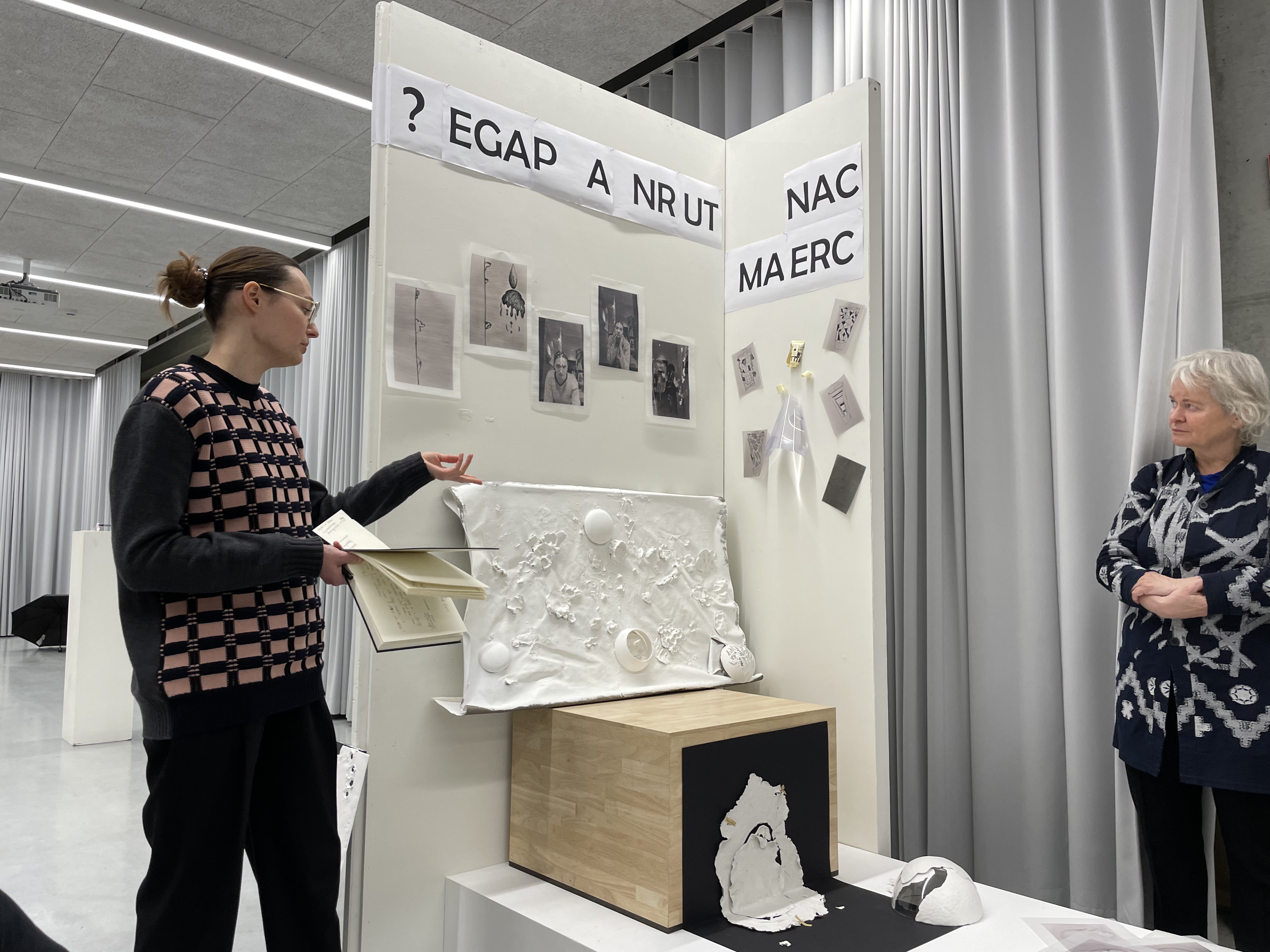
WHEN AN OBJECT BECOMES A THING
A 7 week workshop with Gijs Bakker & Louise Schouwenberg
Whereas people usually alternate speaking of ‘objects’ and ‘things’, one can make a philosophical difference between those two terms, which have to do with how people relate to them in their daily lives. Some remain objects, others become things. Some items seem that much part of people’s daily surroundings, that they tend to forget about them, don’t consciously notice them, not even when using them intensely. At the same time, other items stand out, are noticed, and receive people’s attention. To give an example: were you aware of the fact that you’re now probably sitting on a chair, in front of a table, on a specific floor, within a specific space, or do you start to notice the object ‘chair’ now that we mention it in this text?
In general, one can say that functional items usually disappear from our consciousness for as long as they do what they are intended to do, when they perform or function well. But once an item gets broken, when for instance one of the chair’s legs breaks off, the one sitting on the chair starts to notice that he/she/them is sitting on a physical item. The German philosopher Martin Heidegger would then say: the object ‘chair’ was not noticed while it functioned and people could rely blindly on its functioning. Once it does get noticed, for instance because it is broken, the ‘object’ turns into a ‘thing’.
Other philosophers have continued to reflect on this difference between ‘object’ and ‘thing’, due to how people relate to them. One of the thinkers we will deal with in our Studio is Bill Brown. There’s more to it than a broken object, Brown says, and thus he extends Heidegger’s definition. Objects become things when we become conscious of the stories they contain. They become things when they succeed in evoking memories, or when the traces on the skins of objects create an awareness of how they are made, by whom, why, where. Objects become things when….
To complicate matters further, current consumer society has brought a multitude of nonsensical items to our houses. Stuff. People are lured into acquiring things with the implicit promise of increased happiness and improved identity once they possess that shiny machine, that impressive car, that dress from a well-known brand. What’s the nature of commercial stuff? Can we call an easily discardable consumer item, such as a souvenir bought at the airport, a ‘thing’, or is it an ‘object’? What has consumerism done to our relationship with objects / things?
The example we gave of a broken chair may clearly indicate the difference between an object that usually disappears from consciousness in our daily life, and a thing with which the user has a special relationship, such as that precious box you received from your lover, or that old lamp shade which evokes childhood memories of intimate moments with your grandma. It’s easy to notice the difference between a functional item we use without paying attention and a thing that carries such personal narratives. The discussion becomes harder if we speak of objects / things which are both intended to be functional, subservient, as well as meaningful and outspoken. Contemporary design, including jewellery design, has this double characteristic of being at the same time ‘functional’ and demanding attention for its physical presence. Contemporary design, especially jewellery design, appeals to a close and intimate relationship with the one who uses it or wears it.
How does it work? When, and how, does a daily (functional) object turn into a thing? Is it a matter of chance and would it be impossiblefor a designer to influence how and when somebody will have a meaningful and intimate relationship with an object? Or is the reverse possible: can a designer consciously infuse an object with characteristics, which will invite an intimate relationship with the user?
In short, there’s a philosophical difference between ‘object’ and ‘thing’, which have to do with how people relate to them. In this Studio we will try to get a grip on the differences and try to use our knowledge and imagination to transform objects into things, for instance by making them more personal, by infusing them with added narratives, by highlighting their materiality, or to turn them into meaningful testimonies of the gap between objects and things and what it takes to bridge that gap.

2021-
MASieraad Hasselt-Amsterdam
MASieraad has started its international two-year Masterclass Programme MASieraad Hasselt–Amsterdam, or MASieraad H-A. The integrated educational Programme is in collaboration with PXL-MAD School of Arts Hasselt.
Follow our News section for updates on new opening applications to apply for the new academic years.
To find out in more detail the projects being done and held follow the academic year on instagram .
Or contact info@masieraad.com for more information.
2018-20
MA Challenging Jewellery at Sandberg Instituut
Challenging Jewellery speaks to the conflicting demands and expectations put on “learning” in design education today, caught between individual entrepreneurship, craftsmanship, research and social collectivity. How could the legacy of the board’s conceptual design practices, paired with BLESS idiosyncratic approach to product design, lead to a future – and do so in the context of the Sandberg Institute nonetheless? This was the central experiment in the program, named by the board as Challenging Jewellery, executed by BLESS.
A wide range of students – coming from traditions of goldsmithing, jewellery, design, art, economics, performance – joined BLESS in this fearless multidimensional inquiry into value. The program became an embodied experiment in challenging instant output as the central demand in design education: to make packaged people-brands ready for the market. Challenging Jewellery, rather, gestured to freedom and the non-linear path of human and creative growth, which one can only hope that students took with them – directly and unconsciously.The Challenging Jewellery program made students think beyond disparate markets and institutions in order to garner free thinking and encourage fearlessness – and ultimately, to build something, creatively, alone and together.
-BLESS
Programme Directors
BLESS (Desiree Heiss, Ines Kaag)
Supervisory Board
Gijs Bakker, Ruudt Peters, Ted Noten, Liesbeth den Besten
Participants
Veronika Fabian, Silvia Faggiani, Gabriella Goldsmith, Ting Gong, Eva van Kempen, Morgane de Klerk, Laila El Mehelmy, Marek Mrowinksi, Margaret Munchheimer, Stephanie Schuitemaker, Marilyn Volkman, Joanne Vosloo
Coordinator
Sarah Mesritz
Challenging Jewellery Thesis Work
https://challengingjewellery.com/home.html
Ting Gong
http://ting-gong.com/#/
https://a-way-of-wearing.com/

Ting Gong challenges the way we consider the garment. Influenced by her admiration of the traditional clothes of chinese farmers, Gong encourages us to recognize the life and maker behind what we wear. Her on-going work, A Way of Wearing, brings together the wearer, the maker, and the lifetime of a garment. Gong utilizes the exchange between the maker and consumer to build a relationship. After she gives away a piece, she offers an embroidery for the garment each year, perpetuating their connection and representing the gradual relationship being built. Through this work we are connected with the maker, the historical context of the garment, and the potential of what we choose to wear.
*rainbow wardrobe sponsored by Time & Style.
Eva van Kempen, The Filigree Ambassador
http://www.evavankempen.com

Eva van Kempen is re-engaging the disappearing wire jewellery specialisation of filigree. She conducted comparative field research on the prevalence of filigree in China and in the Netherlands. Van Kempen is contemporising* the time consuming tradition of working in filigree to fit within our private fast-paced lives. Using inexpensive materials and socialising elementary steps of the technique, van Kempen shows us that this meditative craft technique can be valuable still today as a contemporary form of self-care. She argues that practicing an intangible cultural heritage can provide people with a sense of meaning as it connects the past the present and the future. With The Filigree Ambassador Project, the designer aims to re-popularise the forgotten technique by inspiring artists, hobbyists and makers to find new applications to innovate the looks of the works to make it more appealing to wearers today.
Find Eva’s research published in theJournal of Jewellery Research – Volume 04
The Filigree Ambassador: A Strategy to Revive an Intangible Cultural Heritage
Margaret Munchheimer
https://margaretmunchheimer.com/

Margaret Munchheimer’s traditional background in goldsmithing guides her critical thinking about craft as a form of “body knowledge. Her series, Alphabet of Touch, engages craft not as the making of stagnant objects but as a method of contemplation, a physical practice to synthesize intellectual concepts. These pieces reflect meditations both on the communication in the human gesture, as well as the legacy of handmade technology, the power literally in our hands. In parallel, Munchheimer draws on the social component of making, to create an oral archive of the Challenging Jewellery cohort. A self-styled ‘artist translation service’ she opens space for each student to contemplate their work and explore their experience with the program, through a series of one on one interviews about the individual work, which she renders into audio portraits; a tool to present the artist in their own words.
Podcast- https://challengingjewellery.com/artwork/4813313-Conversations-with-CJ.html
https://gabriellagoldsmith.com/about
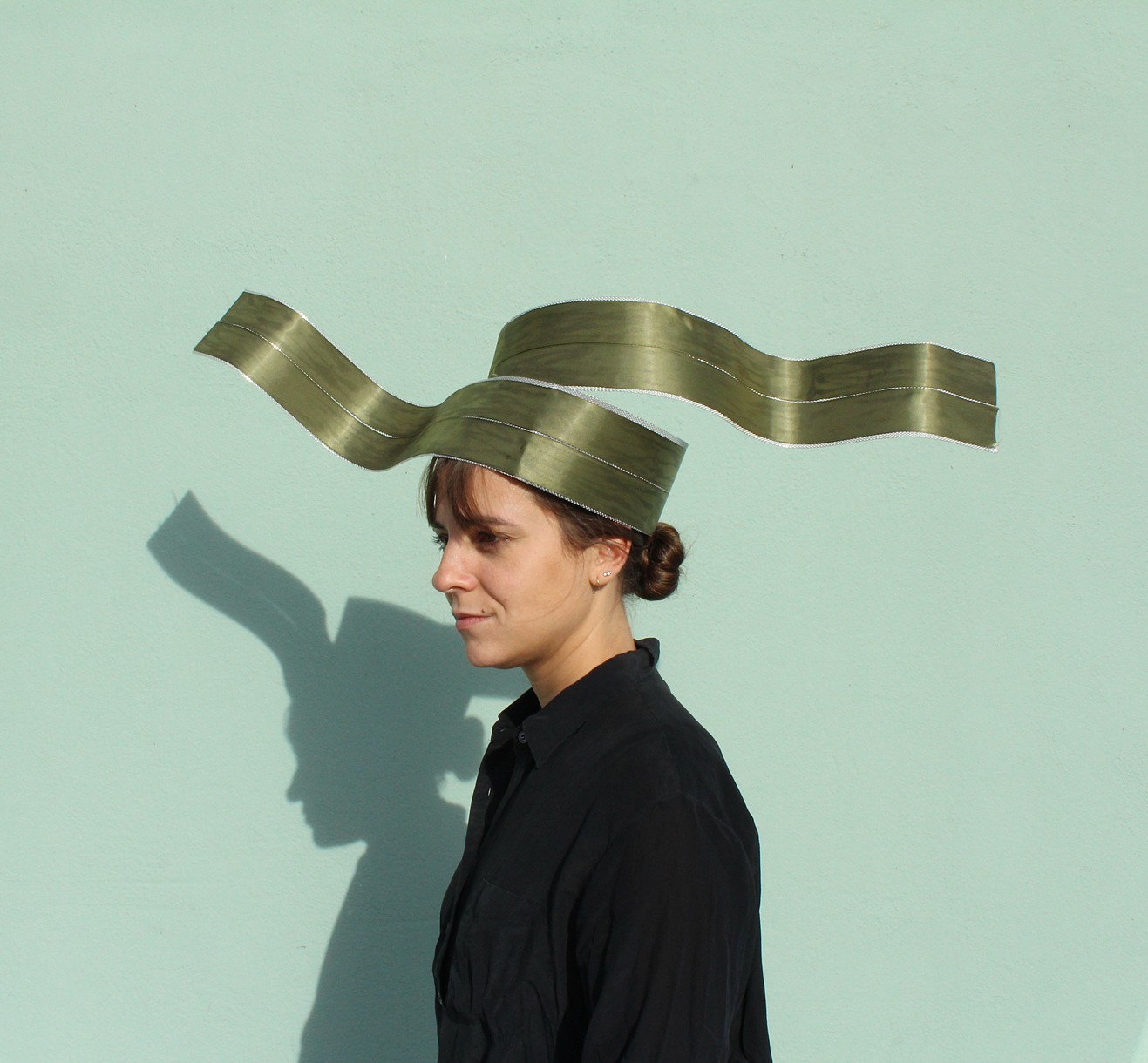
Gabriella Goldsmith is a jewellery designer who rather abruptly relocated from Amsterdam back to Denmark during the COVID-crisis. During quarantine at her parents’ house, she discovered an old bag with ribbons that her mom had been collecting over the years, and Gabriella has imagined these relics come to life by weaving them into surreal sculptural pieces.
Veronika Fabian
ilovechains.com
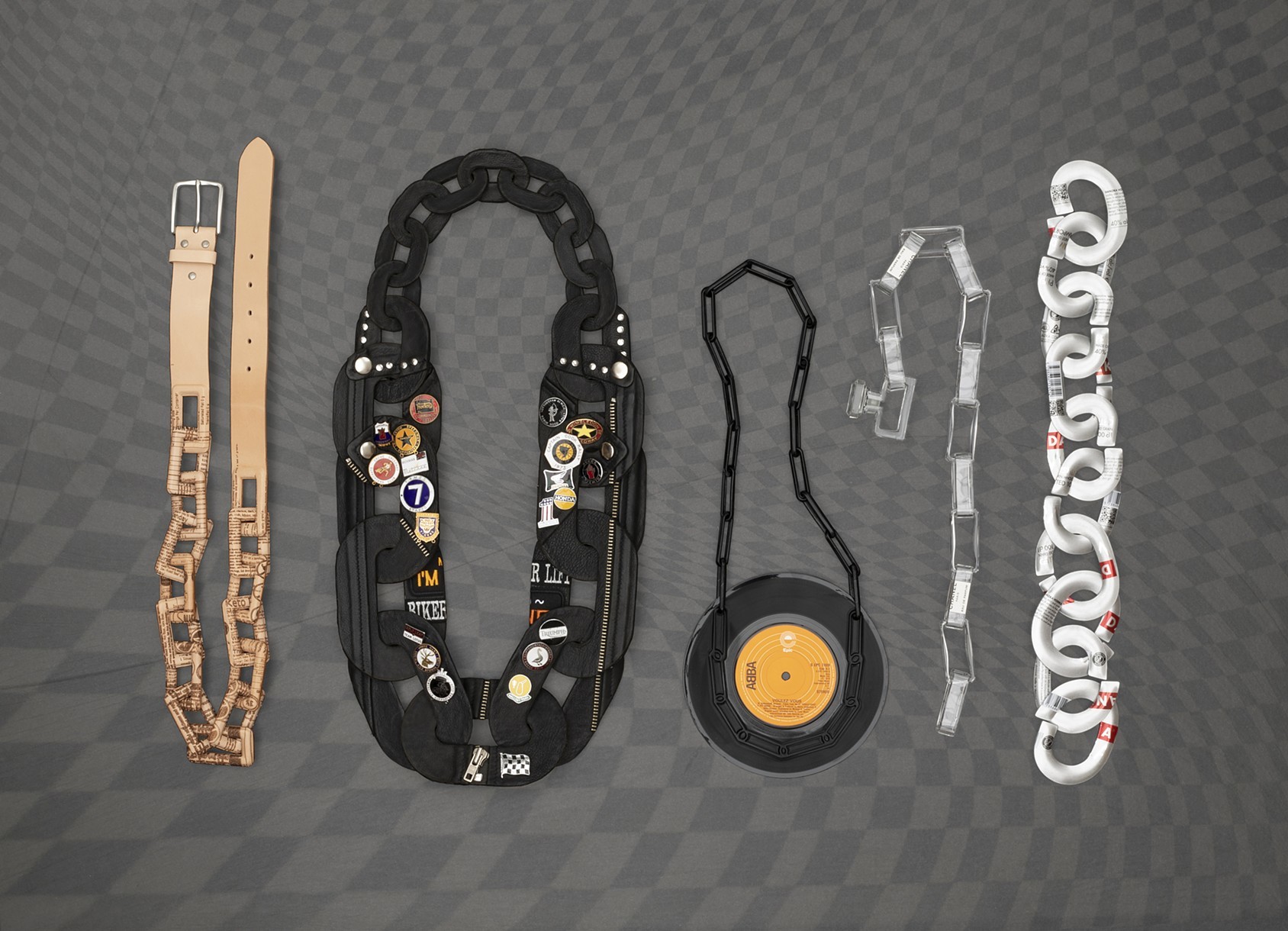
Veronika’s work investigates the impact of contemporary capitalism on daily life and personal identity, both of which play a vital role in her final project. Interested in the importance of commodities, she has experimented over the last year in reifying them into pieces of adornment in their own right. Investigating the role of artefacts as signifiers of identity and as a potential way through that value can be created and expressed, she conducted a survey asking individuals to name their most essential possessions. Veronika condensed the outcome of the survey into a series of chain necklaces, analyzing and reflecting on our material culture, to stimulate a dialogue on the necessity and value of our things.
Collaborators: Kristof Hajos-Devenyi, Akos Mesterhazy, Ambrus Tovishazi, Martijn van Ooststroom, Jo Bloxham, J. P. Cardeira, Marilyn Volkman, Greg Lipoczi
Joanne Vosloo

Joanne Vosloo is a multi-purpose designer with a background in fashion moving between conceptual design, process-oriented work, and audiovisual art. Experimenting with narrative form, she comments on the developmental influence of the "on" and "offline" world through garments while capturing the many stories that lifelong objects contain.
Vosloo presents a sandbox inhabited by various created objects and baptized "digi-friends". The installation is inspired by the longevity that sand possesses, a collectors item in-game as well the actual presence a player is able to leave behind. An unvarnished translation of the term "sandbox game" (defined as an open world video game where one's avatar can explore, collect and construct), Joannes work is based on recrafting a physical interpretation highlighting counter-experiences. Morphing this logic back into physical exhibition space, Vosloo invites viewers to speculate between physical and virtual systems, and interrogate what happens to work, creativity and object-making in the various stages of digitization.
Marilyn Volkman
https://marilynvolkman.com/home.html
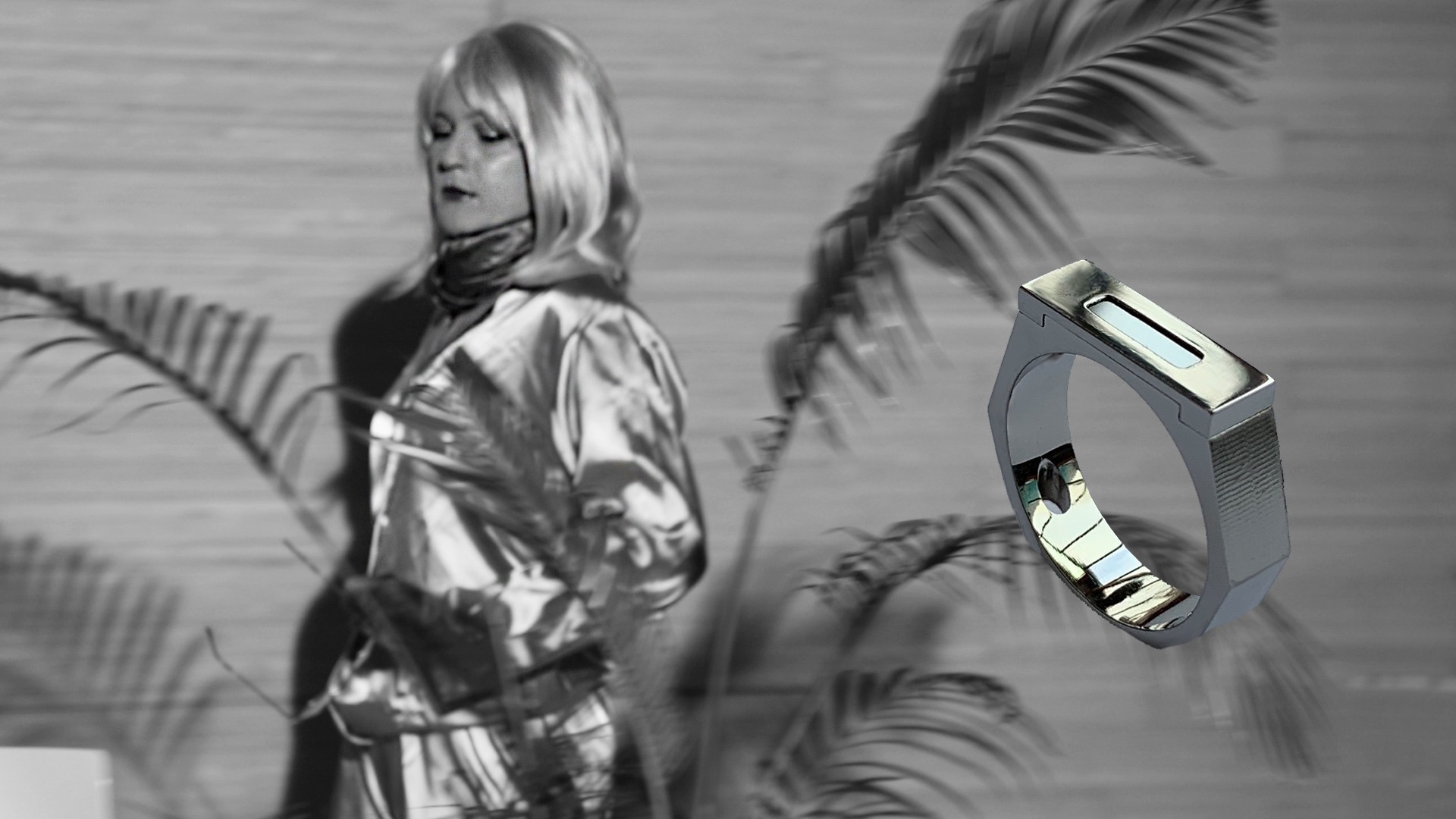
Volkman is an American artist-curator with a background in both performance and administration. Her graduation work, EVERYTHING IS VALUES, depicts and restages the complex interactions between people during the Challenging Jewellery master’s degree. Drawing on methodologies taken from anthropology, auto-fiction and institutional archiving, the work is at once a novel, a film, and a physical object interrogating how communal ideals, failure, taste, money, and scale interact in the collective search for inspiration and purpose.
Volkman spent the last two years in the role of participant-observer, openly tracking and scripting developments between and within course collaborators into a thesis novel. She then adapted the manuscript into a serialized video that explores dynamics of institutionalized teaching and experimental pedagogy in scenes derived from the program. Born from a collaboration between the film’s characters and the physicist Dr. Kimberly Modic, the Class Ring engraves ninety-four pages of Volkman’s thesis novel at nano-size onto a silicon wafer set in stainless steel. Dr. Modic, a specialist in quantum materials, collaborated with the project at the Institute of Science and Technology in Austria, where she used a focused-ion beam (FIB) to craft the narrative-based element of the class ring
Morgane de Klerk
https://www.morganedeklerk.com/

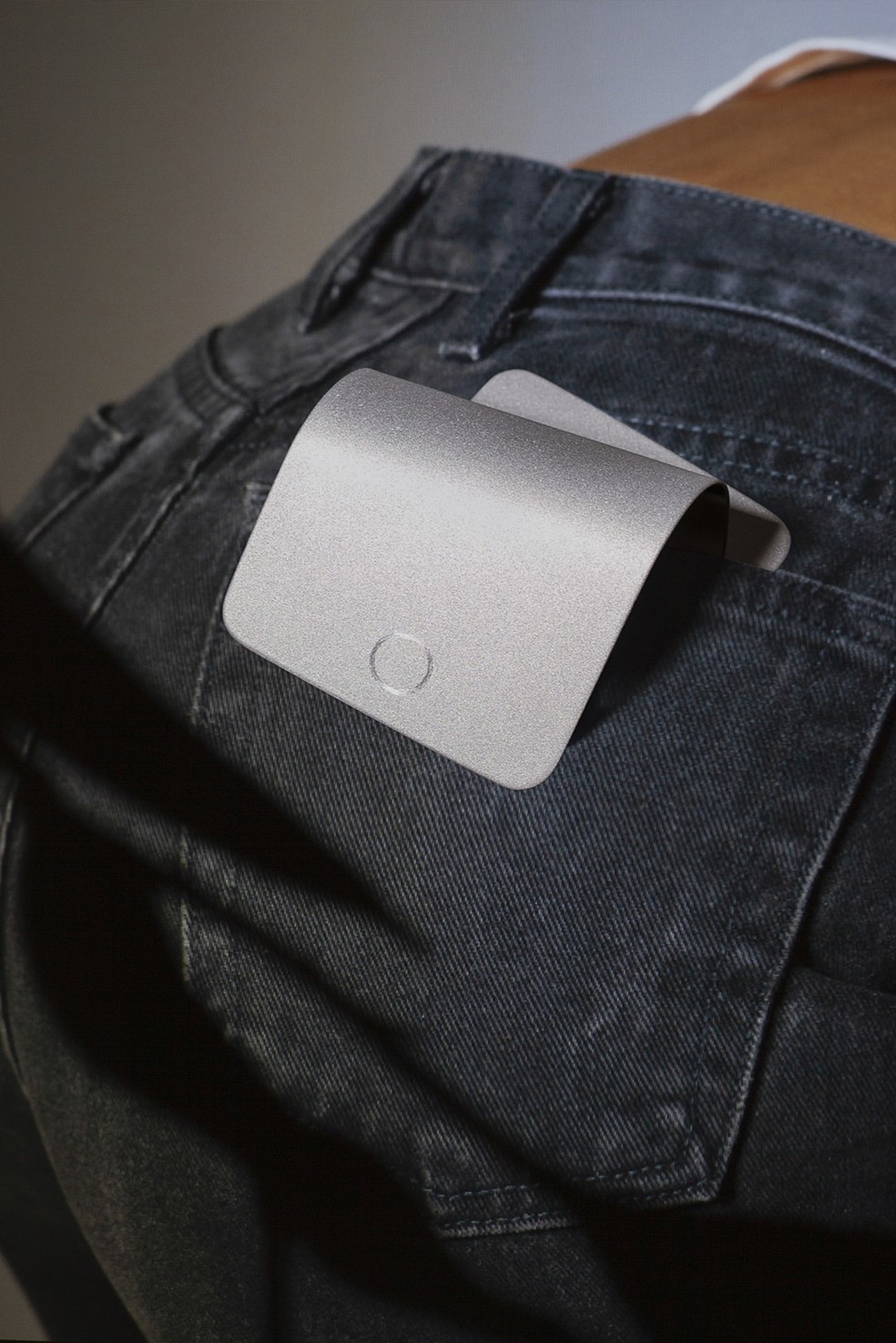
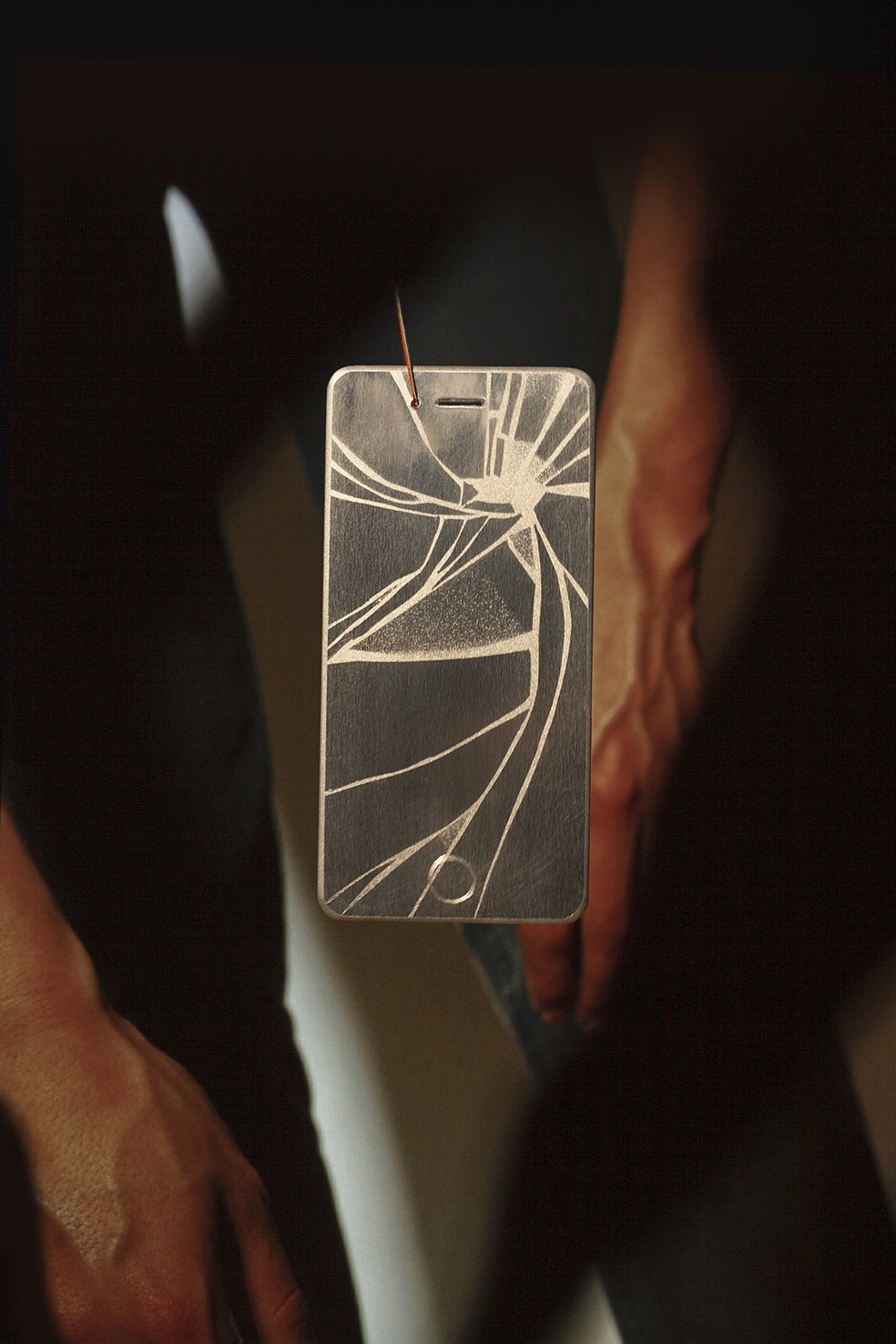
Morgane is a research-driven jewellery maker. Her project investigates privacy and surveillance technologies in the age of the smartphone: the increasing invisibility and dematerialization of surveillance, and how to position oneself against that as a maker of objects. Initially working with a range of face recognition-blocking prototypes, her final collection is a series of 9 aluminum pieces that serve as tokens of surveillance rather than having any actual function. Rather, they serve as decorative pieces that look like iPhones crawling up the pocket, surrounding the body, like shadows of the real thing. At Het HEM, Morgane presents an interactive service where audiences can have free clay replicas made of their smartphones. This later chapter of her work is aligned with her thesis “RendezVous at the Workspace: an Observation,” which deals with the different social elements that surround making through a series of written observations and drawings of various creative spaces. By generating an offline concrete object, the work attempts to stimulate reflection and discussion about value and the dominance of screen-based technology in our lives, even (or particularly) in a design context and during physical distancing.


